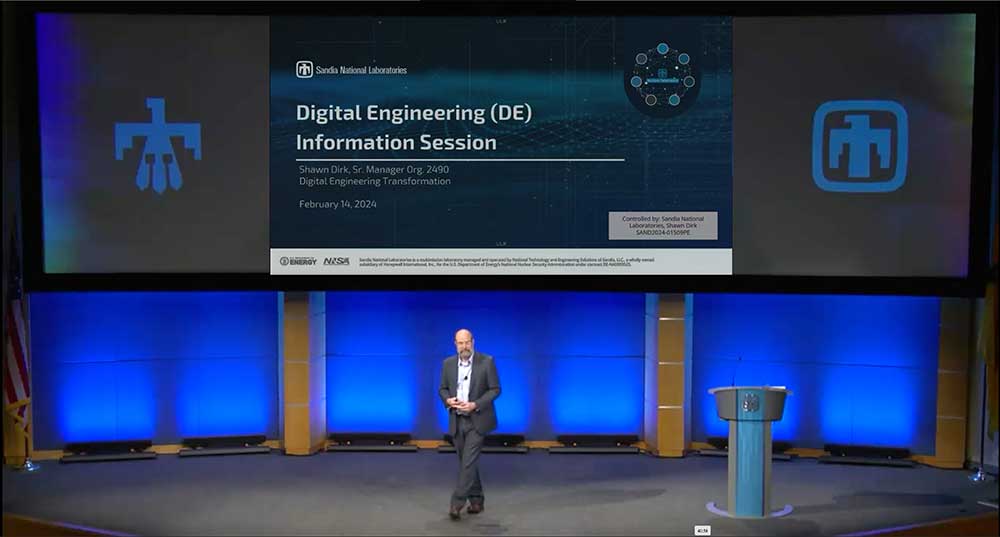
Nearly 900 employees attended an information session, both online and in person, to learn more about Sandia’s digital engineering activities. These efforts support Sandia’s goal to lead in modern engineering.
Here are three key takeaways from the information session held on Feb. 14.
Why now?
The current geopolitical landscape and the escalating proliferation of nuclear weapons underscore the urgency of Sandia’s national security missions. Digital engineering will help the Labs meet the crucial operational needs of nuclear deterrence, as well as other mission areas that deliver critical systems to the nation.
“Digital engineering is a tool that will help us deal with these threats as we move forward,” said Shawn Dirk, a senior manager leading Sandia’s digital engineering efforts.
Digital engineering applies to many capabilities that facilitate increased collaboration while reducing the time required to execute programs, by shifting away from traditional and cumbersome paper-based documentation. In addition to increasing efficiency, digital engineering will allow Sandia to develop higher performing and better optimized systems.
A bigger initiative
Sandia’s digital engineering journey aligns with a larger effort by NNSA to standardize tools that will enable safe and secure data and information exchange across the eight labs, plants and sites comprising the nuclear security enterprise.
“There’s an acknowledgment that no single site can undertake digital engineering alone,” Shawn said.
Sandia started developing the goal to lead in modern engineering early in 2023 and NNSA established the Digital Transformation Senior Steering Group the following summer to spearhead an enterprise effort. Deputy Labs Director Laura McGill co-leads the steering group, which oversees four workgroups, with representation from several Sandia employees.
The right information at the right time
Establishment of a common digital thread, an interconnected flow of data from various sources, is the centerpiece of our digital engineering efforts that will serve as the authoritative source of truth. It facilitates the use of Sandia’s extensive capabilities in modeling and simulations to drive earlier design decisions, speeding up the iteration and delivery processes.
The NNSA digital engineering framework will create a data-driven architecture for greater collaboration. The digital engineering transformation is not just about the tools. Data is at the heart of the transformation. Facilitating data flow between design and production agencies is key.
“It’s a capability that enables decisions through the analysis of data from multiple sources at multiple sites. It allows users to have that data at their fingertips at the right time,” Shawn said.
Sandia has developed a strategy around digital engineering and corporate milestones, deploying model-based definition and model-based system engineering on the W87-1, and even more so on the W93 program as capabilities are matured.